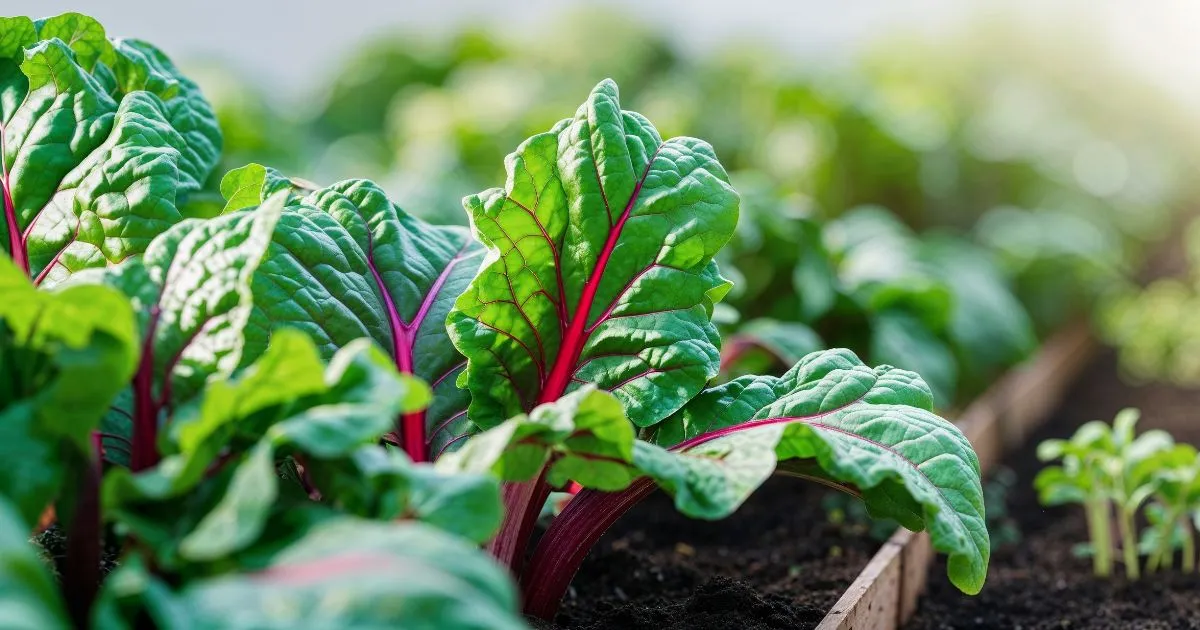Table of Contents
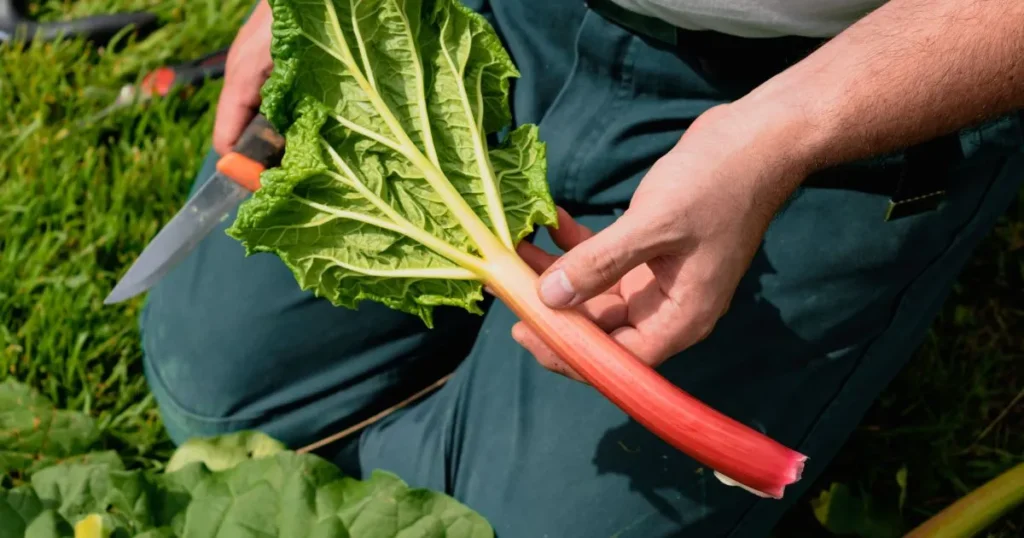
Rhubarb is a versatile and hardy perennial plant that is prized for its tart, flavorful stalks, which are commonly used in pies, jams, and desserts. While rhubarb is traditionally grown in garden beds, it can also thrive in containers, making it an excellent option for gardeners with limited space. In this detailed guide, we’ll explore everything you need to know about potting rhubarb, from selecting the right container to caring for your plant and harvesting its stalks. Whether you’re a beginner or an experienced gardener, this guide will help you successfully grow rhubarb in pots.
Why Grow Rhubarb in Pots?
Potting rhubarb offers several advantages, especially for those with limited garden space or poor soil conditions. Growing rhubarb in containers allows you to control the soil quality, drainage, and sunlight exposure, ensuring optimal growing conditions for your plant. Additionally, potting rhubarb makes it easier to protect the plant from pests and diseases.
Benefits of Potting Rhubarb
- Space Efficiency: Ideal for small gardens, balconies, or patios.
- Soil Control: You can create the perfect soil mix for rhubarb, which prefers well-draining, fertile soil.
- Pest Management: Containers make it easier to monitor and control pests.
- Mobility: You can move the pot to optimize sunlight exposure or protect the plant from harsh weather.
Choosing the Right Container for Potting Rhubarb
Size Matters
Rhubarb plants have deep root systems, so it’s essential to choose a large container. A pot that is at least 18-24 inches deep and 20-24 inches wide is ideal for potting rhubarb. This will provide enough space for the roots to grow and support the plant’s large leaves and stalks.
Why Size is Important
- Root Development: Rhubarb roots need ample space to spread and absorb nutrients.
- Stability: A larger pot provides better stability for the plant, especially as it grows taller and heavier.
Material Considerations
Containers made of durable materials like ceramic, plastic, or wood are suitable for potting rhubarb. Ensure the pot has adequate drainage holes to prevent waterlogging, which can lead to root rot.
Pros and Cons of Different Materials
- Ceramic: Heavy and durable but can be expensive.
- Plastic: Lightweight and affordable but may degrade over time.
- Wood: Natural and aesthetically pleasing but requires maintenance to prevent rot.
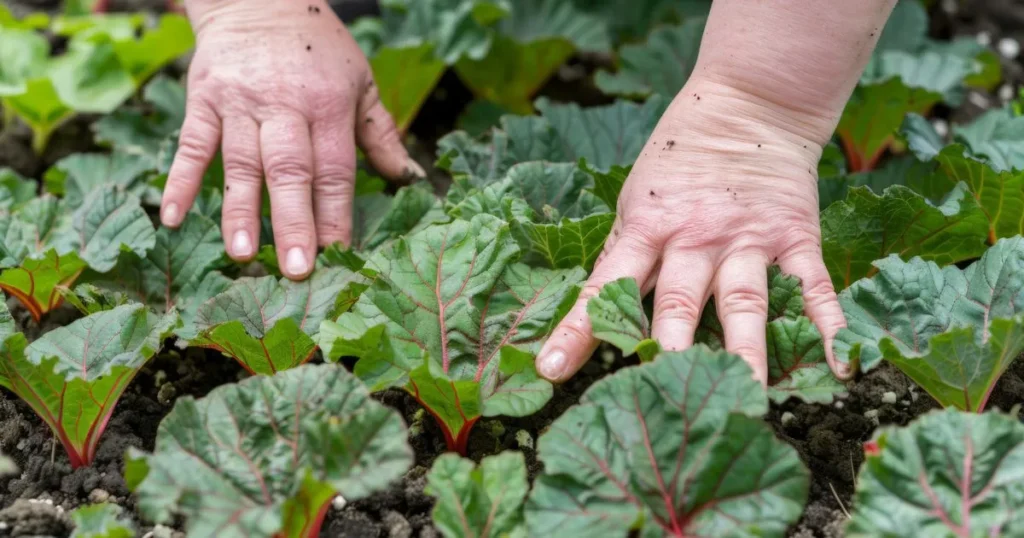
Selecting the Right Soil for Potting Rhubarb
Soil Requirements
Rhubarb thrives in well-draining, fertile soil with a slightly acidic to neutral pH (6.0-7.0). A high-quality potting mix enriched with organic matter, such as compost or well-rotted manure, is ideal for potting rhubarb.
Importance of Soil Quality
- Nutrient Availability: Rhubarb is a heavy feeder and requires nutrient-rich soil for optimal growth.
- Drainage: Poor drainage can lead to root rot, so ensure the soil is loose and well-aerated.
Soil Preparation
Before planting, mix the potting soil with compost or aged manure to provide essential nutrients. Ensure the soil is loose and well-aerated to promote healthy root growth.
Steps for Preparing Soil
- Choose a high-quality potting mix.
- Add compost or well-rotted manure to enrich the soil.
- Mix thoroughly to ensure even distribution of nutrients.
Planting Rhubarb in Containers
Step-by-Step Guide to Potting Rhubarb
- Choose a Healthy Crown or Seedling: Select a rhubarb crown or seedling from a reputable nursery. Crowns are the most common option for potting rhubarb.
- Fill the Container with Soil: Fill the pot about two-thirds full with the prepared potting mix.
- Plant the Crown: Place the rhubarb crown in the center of the pot, ensuring the buds are facing upward. Cover the crown with soil, leaving the top buds exposed.
- Water Thoroughly: Water the plant thoroughly after planting to settle the soil around the roots.
Tips for Planting
- Spacing: If planting multiple crowns, ensure they are spaced at least 3 feet apart.
- Depth: Plant the crown so that the buds are just below the soil surface.

Caring for Potted Rhubarb
Watering
Rhubarb requires consistent moisture, especially during the growing season. Water the plant deeply whenever the top inch of soil feels dry. Avoid overwatering, as this can lead to root rot.
Watering Tips
- Frequency: Water 2-3 times per week, depending on weather conditions.
- Method: Use a watering can or hose with a gentle spray to avoid disturbing the soil.
Fertilizing
Feed your potted rhubarb with a balanced fertilizer or compost every 4-6 weeks during the growing season. This will provide the nutrients needed for healthy growth and abundant stalks.
Types of Fertilizers
- Organic: Compost, aged manure, or fish emulsion.
- Synthetic: Balanced granular fertilizers (e.g., 10-10-10).
Sunlight
Rhubarb thrives in full sun but can tolerate partial shade. Place your container in a location that receives at least 6 hours of sunlight daily.
Optimizing Sunlight Exposure
- Positioning: Place the pot in a south-facing location for maximum sunlight.
- Shade: Use shade cloth during extreme heat to protect the plant.
Mulching
Apply a layer of mulch, such as straw or shredded leaves, around the base of the plant to retain moisture and regulate soil temperature.
Benefits of Mulching
- Moisture Retention: Reduces the need for frequent watering.
- Weed Control: Prevents weeds from competing with rhubarb for nutrients.
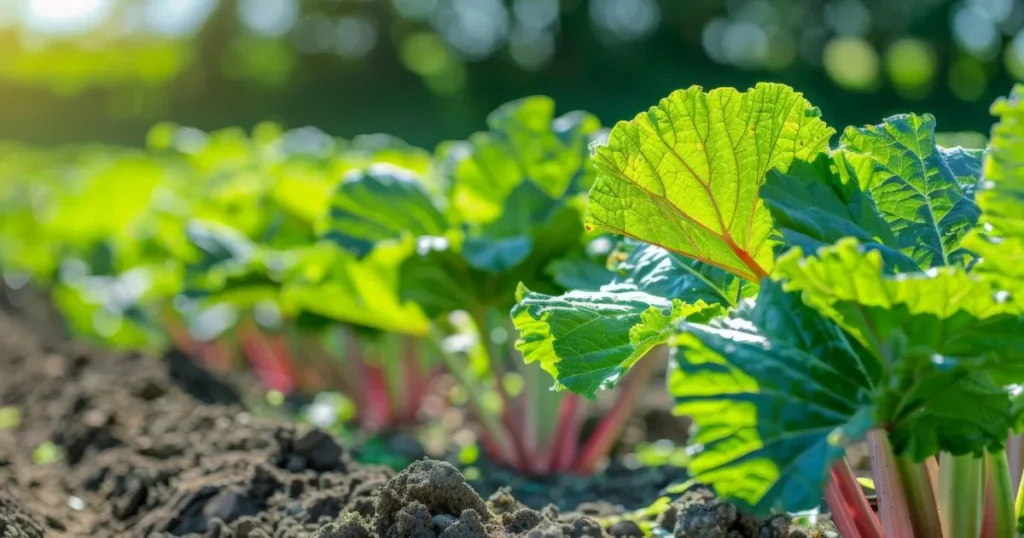
Protecting Potted Rhubarb from Pests and Diseases
Common Pests
- Aphids: These small insects can be controlled with insecticidal soap or neem oil.
- Slugs and Snails: Use organic slug repellents or traps to protect your plant.
Pest Prevention Tips
- Regular Inspection: Check the plant regularly for signs of pests.
- Natural Predators: Encourage beneficial insects like ladybugs to control aphids.
Common Diseases
- Crown Rot: Ensure proper drainage to prevent this fungal disease.
- Leaf Spot: Remove affected leaves and avoid overhead watering to reduce the risk of infection.
Disease Management
- Sanitation: Keep the area around the plant clean and free of debris.
- Fungicides: Use organic fungicides if necessary to control fungal diseases.
Harvesting Rhubarb from Containers
When to Harvest
Wait until the second year after planting to harvest rhubarb stalks. This allows the plant to establish a strong root system. Harvest stalks in spring or early summer when they are 10-15 inches long.
Signs of Readiness
- Stalk Thickness: Stalks should be thick and firm.
- Color: Stalks should be vibrant and free of blemishes.
How to Harvest
Gently pull the stalks from the base of the plant, or use a sharp knife to cut them. Avoid harvesting more than one-third of the stalks at a time to ensure the plant continues to thrive.
Harvesting Tips
- Timing: Harvest in the morning when the stalks are most hydrated.
- Storage: Store harvested stalks in the refrigerator for up to two weeks.
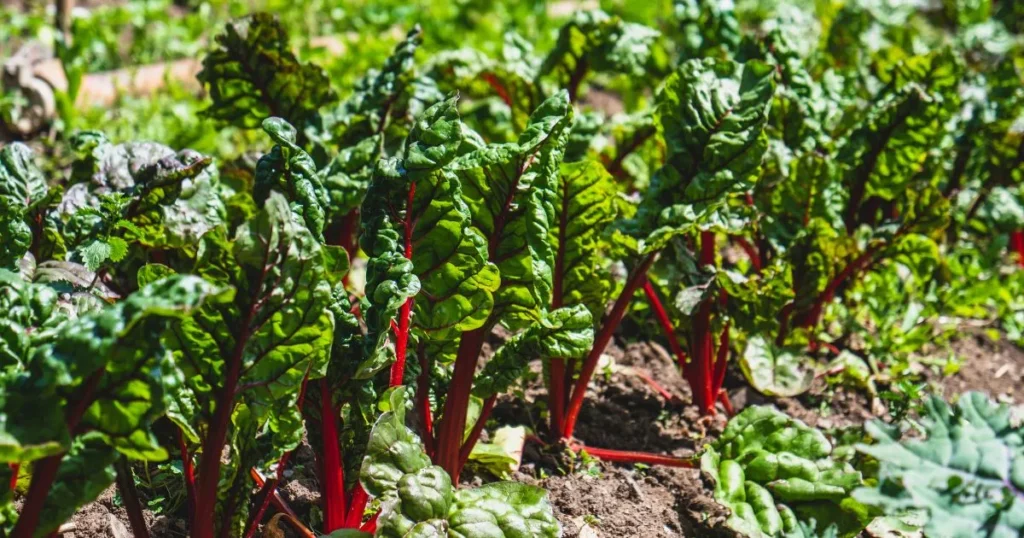
Overwintering Potted Rhubarb
Preparing for Winter
Rhubarb is a cold-hardy plant, but potted rhubarb may need extra protection during winter. Move the container to a sheltered location, such as a garage or shed, to protect it from extreme cold.
Winter Care Steps
- Pruning: Cut back the foliage after the first frost.
- Mulching: Apply a thick layer of mulch around the base of the plant.
- Insulation: Wrap the container with burlap or bubble wrap.
Mulching and Insulation
Apply a thick layer of mulch around the base of the plant to insulate the roots. You can also wrap the container with burlap or bubble wrap for added protection.
Benefits of Insulation
- Temperature Regulation: Protects the roots from freezing temperatures.
- Moisture Retention: Prevents the soil from drying out.
Conclusion
Potting rhubarb is a rewarding and practical way to grow this versatile plant, even if you have limited garden space. By choosing the right container, soil, and care techniques, you can enjoy a bountiful harvest of rhubarb stalks year after year. Whether you’re a beginner or an experienced gardener, potting rhubarb is a simple and enjoyable gardening project that yields delicious results.
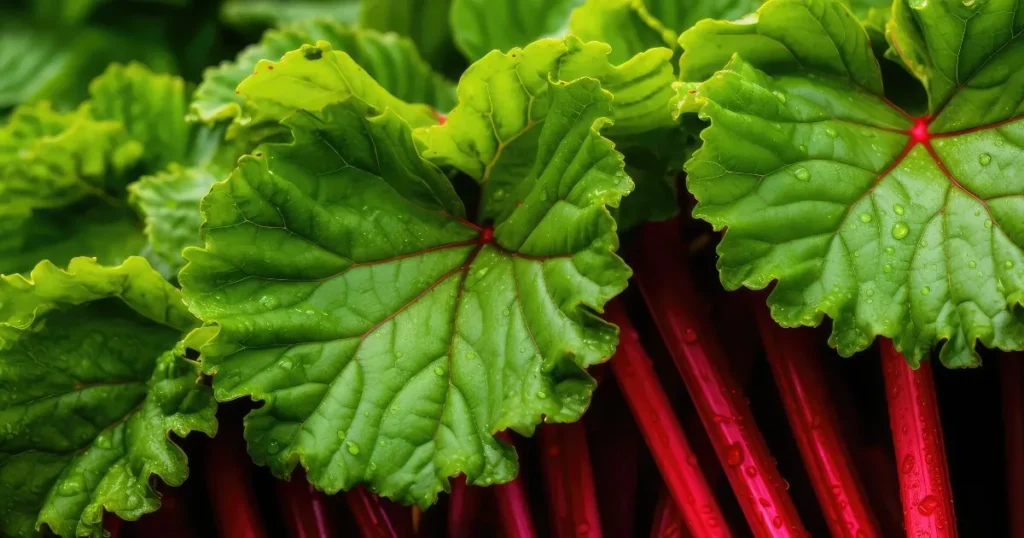
FAQs About Potting Rhubarb
1. Can rhubarb grow in pots?
Yes, rhubarb can grow successfully in pots as long as the container is large enough and the plant receives proper care.
2. How big of a pot do I need for rhubarb?
A pot that is at least 18-24 inches deep and 20-24 inches wide is ideal for potting rhubarb.
3. What type of soil is best for potting rhubarb?
Rhubarb thrives in well-draining, fertile soil with a slightly acidic to neutral pH (6.0-7.0). A high-quality potting mix enriched with organic matter is recommended.
4. How often should I water potted rhubarb?
Water your potted rhubarb whenever the top inch of soil feels dry. Ensure the soil remains consistently moist but not waterlogged.
5. Can I harvest rhubarb in the first year?
It’s best to wait until the second year after planting to harvest rhubarb stalks. This allows the plant to establish a strong root system.
6. How do I protect potted rhubarb during winter?
Move the container to a sheltered location, apply a thick layer of mulch, and insulate the pot with burlap or bubble wrap to protect the plant from extreme cold.
By following this guide, you’ll be well-equipped to start potting rhubarb and enjoy the fruits (or stalks) of your labor. Happy gardening!

